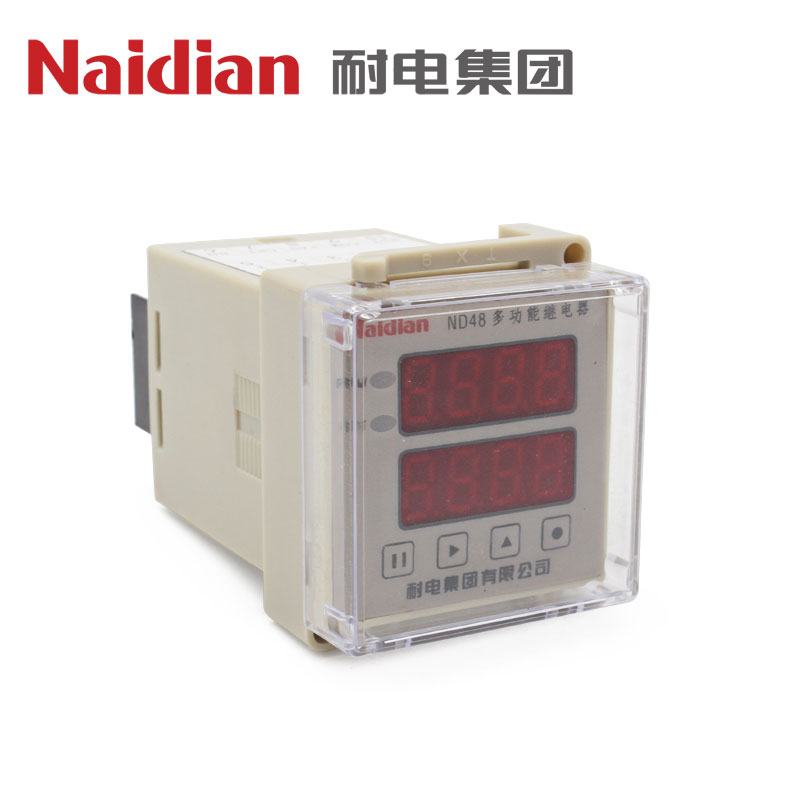What is the future development trend of time relay?
Time relay is an electrical control element. Its main function is that after adding (or removing) the input action signal, its output circuit needs to undergo a specified accurate time before it can produce a jump change (or contact action). Time relays are usually used in circuits with lower voltage or lower current to control circuits with higher voltage and higher current to achieve delay control functions. The future development trend of time relays can be summarized as follows:
1. Expansion of application areas
Growing demand in emerging fields: With the rapid development of emerging fields such as new energy vehicles, smart homes, and industrial automation, the demand for time relays in these fields will continue to grow. Time relays will play an important role in these fields, such as controlling the delayed start of equipment and protecting the normal operation of equipment.
Upgrading of traditional fields: Although the demand for time relays in traditional fields such as electricity, communications, and home appliances may gradually weaken, with the technological upgrading and intelligent transformation of these fields, the demand for high-performance and high-precision time relays will increase.
2. Technological innovation and product upgrading
Technological innovation: Time relay manufacturers will continue to increase R&D investment to promote technological innovation. By introducing new technologies such as digital control technology, microelectronics technology, and intelligent sensing technology, the performance and accuracy of time relays can be improved.
Product upgrade: Products will be upgraded from traditional mechanical and electromagnetic types to electronic and intelligent types. Electronic time relays have the advantages of high accuracy, small size, and good reliability, and will gradually replace traditional time relays. Intelligent time relays can achieve remote monitoring and control through network connection, further improving the intelligence level of the system.
3. Intelligence and networking
Intelligence: With the continuous development of technologies such as the Internet of Things, big data, and artificial intelligence, time relays will gradually develop in the direction of intelligence. Future time relays will have more powerful data processing capabilities, adaptive capabilities, and learning capabilities, and will be able to automatically adjust the delay time according to environmental changes and user needs, thereby improving the intelligence level of the system.
Networking: Time relays will gradually be integrated into the industrial Internet system to achieve interconnection with other devices. Through network connection, remote monitoring, fault diagnosis, upgrade and maintenance of time relays can be realized, improving the reliability and availability of equipment.
4. Greening and sustainable development
Greening: In the context of global energy conservation and emission reduction, time relay manufacturers will focus on the green design of products. Reduce the impact of products on the environment by adopting environmentally friendly materials, reducing energy consumption, and improving energy efficiency.
Sustainable development: Time relay manufacturers will focus on the full life cycle management of products, and pay attention to environmental protection and sustainable development from design, production, use to recycling. At the same time, they will also actively participate in global environmental protection actions and sustainable development projects to promote the greening process of the entire industry.
5. Diversification of market demand
Personalized needs: With the intensification of market competition and the diversification of consumer demand, time relay manufacturers will pay more attention to meeting the personalized needs of customers. They will provide customers with more flexible and diverse product choices through customized design, modular production and other methods.
International market: With the deepening of globalization, the time relay market will become more and more international. Manufacturers will actively explore the international market, strengthen cooperation and exchanges with international customers, and promote the internationalization and standardization of products.
In summary, the future development trend of time relays will show the characteristics of expansion of application fields, technological innovation and product upgrades, intelligence and networking, greening and sustainable development, and diversification of market demand. These trends will drive the time relay industry to move forward and provide more high-quality, efficient and reliable solutions for all walks of life.


